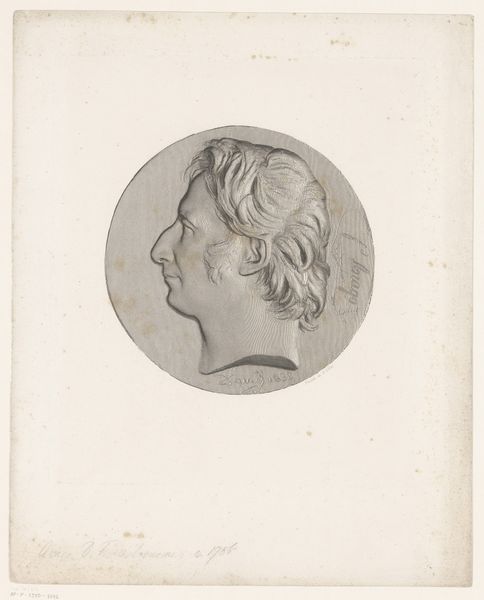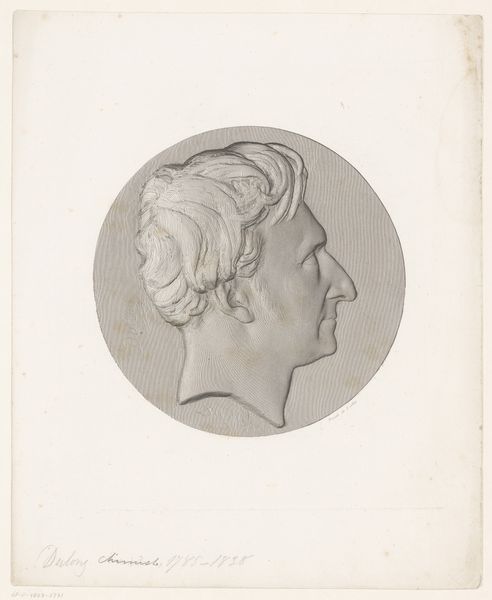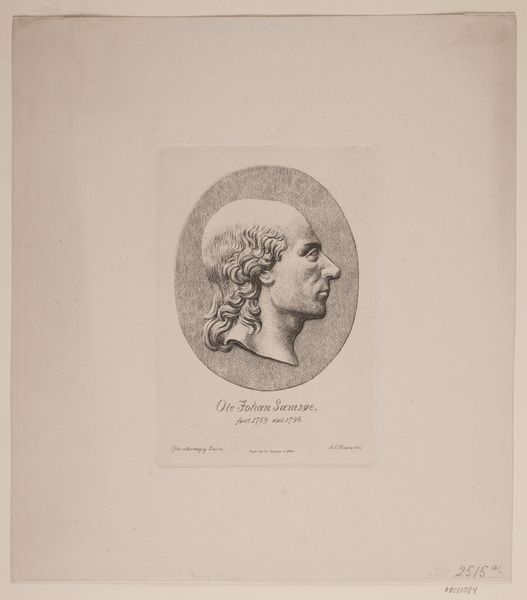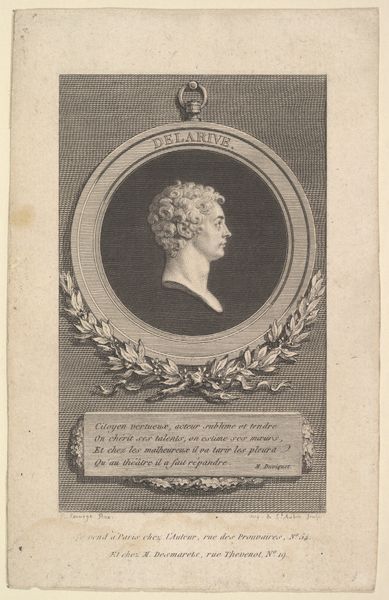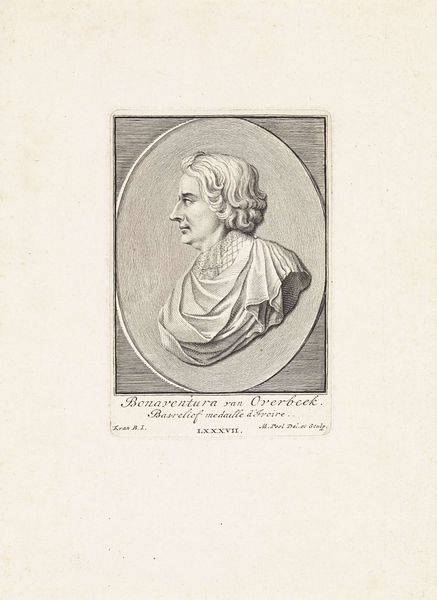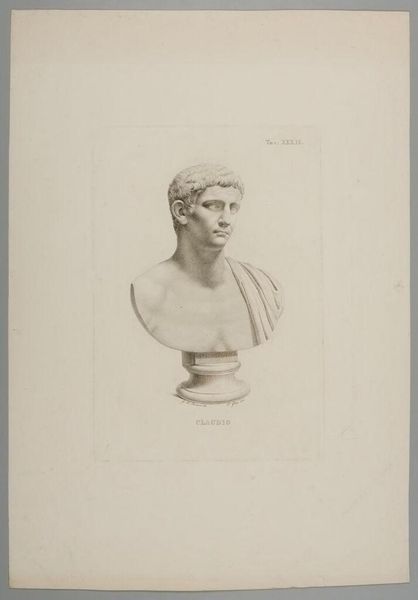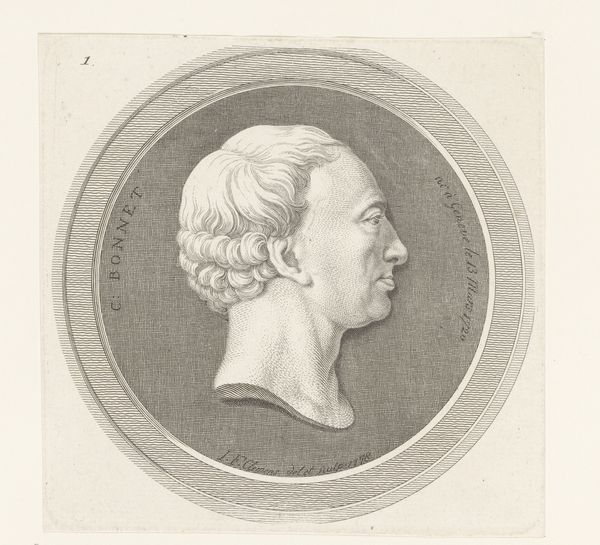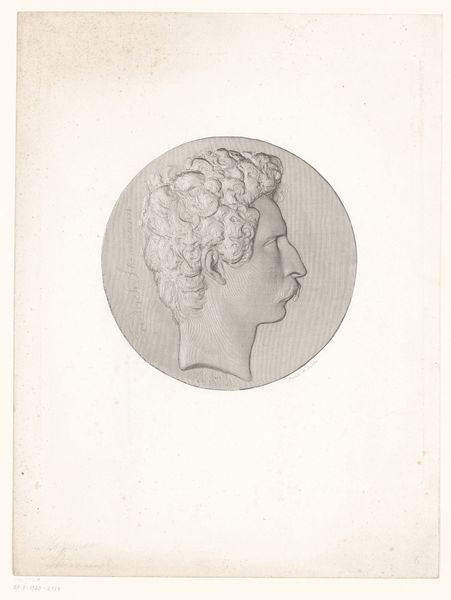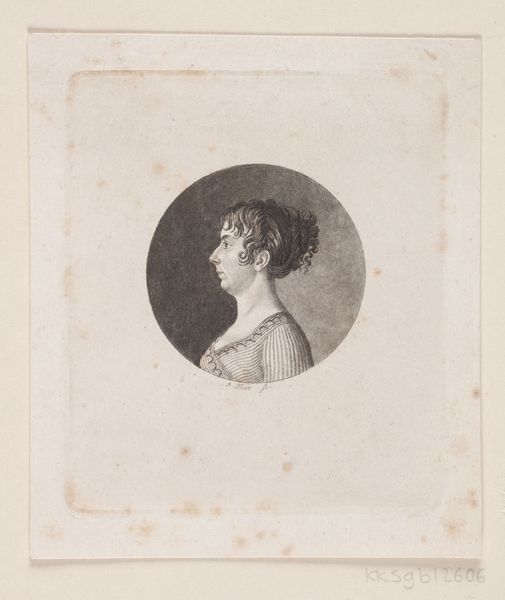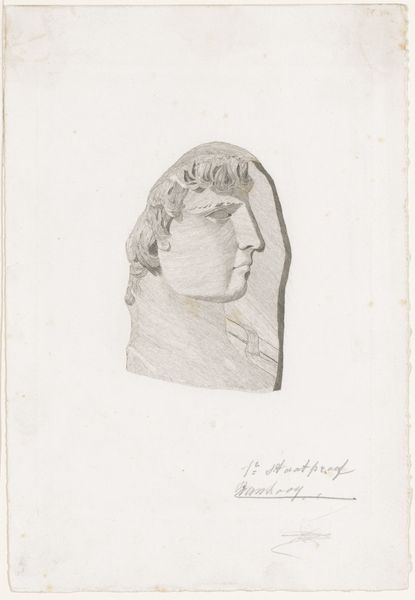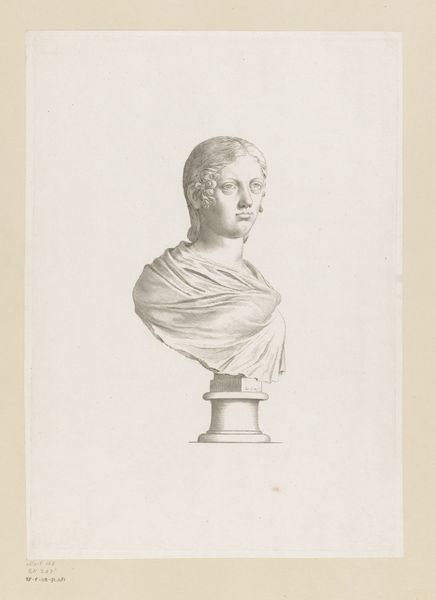
Dimensions: 160 mm (height) x 140 mm (width) (bladmaal)
H.P. Hansen made this engraving of S. Gyldendal sometime in the 19th century, using a technique rooted in the history of reproductive printmaking. Engraving involves using a tool called a burin to incise lines directly into a metal plate, in this case, most likely copper. Ink is then forced into these lines, and the surface is wiped clean, allowing the image to be transferred to paper under high pressure. Consider the skill required to execute such precise, clean lines, building up tone and form through density and direction. The process demands a deep understanding of the materials, and the amount of labor involved is considerable. Engravings like this were initially crucial for disseminating images and knowledge, playing a vital role in the book trade. Hansen’s portrait speaks to the democratization of art through mechanical reproduction, a process tied to the rise of capitalism and mass media. It reminds us that even seemingly simple images carry complex histories of labor, skill, and social change.
Comments
No comments
Be the first to comment and join the conversation on the ultimate creative platform.

